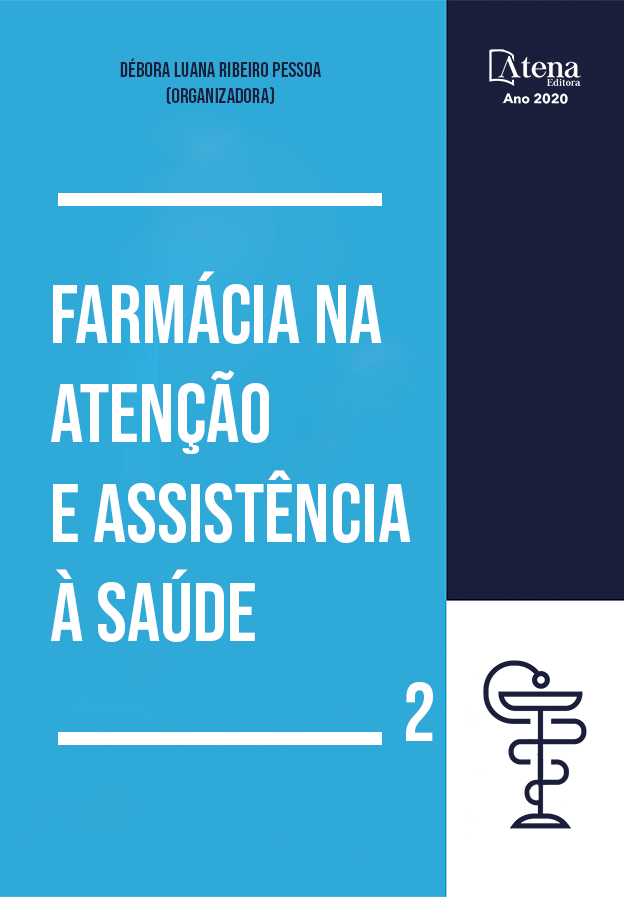
PROSPECÇÃO FITOQUÍMICA E ANTIMICROBIANA DA ROSMARINUS OFFICINALIS L. CULTIVADA NA REGIÃO SUDOESTE DO MARANHÃO
O alecrim (Rosmarinus officinalis L.) é planta pertencente à família Lamiaceae (Labiatae), originária do Sul da Europa e do Norte da África (Martins et al., 1998). É também conhecido pelos nomes populares de alecrim-da-horta, alecrim-de jardim, alecrim-de-cheiro e alecrim-rosmarinho. De acordo com relatos encontrados na literatura, essa planta pode apresentar propriedades medicinais como: estomacais, estimulantes, antiespasmódica, emenagogas e cicatrizantes. O objetivo desse trabalho foi de realizar vários testes com a planta do alecrim e analisar os seus resultados positivos com poder aromático, fitoquímico e antimicrobiano. Os métodos realizados foram a identificação da droga vegetal (caracterização macro e microscópica), pesquisa fitoquímica (pesquisa de taninos, flavonoides, antraquinonas e saponinas), análise de drogas aromáticas, pesquisa qualitativa de princípios ativos, doseamento do óleo essencial e determinação de resíduo pela incineração (cinzas). A análise antimicrobiana foi realizada com método de difusão e ágar (meio sólido) e CIM (concentração inibitória mínima). Na identificação de drogas aromáticas, foram encontrados alguns estômatos, o que confirma a presença de óleos essenciais. Os resultados obtidos na prospecção fitoquímica do extrato botânico do alecrim (Rosmarinus officinalis L.) confirmaram a presença de taninos condensados, saponinas, flavanoides e óleos essenciais, que constam na literatura e são responsáveis pela ação farmacológica da planta. A análise antimicrobiana obteve resultados satisfatórios diante de Staphylococus aureus e Salmonella. Portanto, com os estudos, pode-se confirmar a presença de óleos essenciais no Rosmarinus officinalis, sendo que tais óleos possuem grande relevância terapêutica em estimulantes cerebrais e aromaterapia, e contribuindo para o potencial da fitoterapia na sociedade.
PROSPECÇÃO FITOQUÍMICA E ANTIMICROBIANA DA ROSMARINUS OFFICINALIS L. CULTIVADA NA REGIÃO SUDOESTE DO MARANHÃO
-
DOI: 10.22533/at.ed.73720151224
-
Palavras-chave: Rosmarinus Officinalis, antimicrobiano, fitoterapia
-
Keywords: Rosmarinus Officinalis, Antimicrobial, Phytotherapy
-
Abstract:
Rosemary (Rosmarinus officinalis L.) is a member of the Lamiaceae (Labitae) family that is native to south of Europe and north Africa (Martins et at, 1998). Also, it is commonly known as alecrim-da-horta, alecrim-de-jardim, alecrim-de-cheiro, and alecrim-rosamarinho. According to published reports, this plant can present medicinal properties such as anti-inflammation, anti-fungal, antibacterial, stimulant, emmenagogue, antispasmodic, and healing effect. The aim of this study was to conduct several tests with the rosemary plant and analyze its positive findings about aromatic, phytochemical, and antimicrobial potential. The methods were: identification of the plant drug (macro and microscopic characterization), phytochemical research (tannin, flavonoids, anthraquinones, and saponins), analysis of aromatic drugs, qualitative research of active principles, determination of the essential oil and waste incineration residue (ash). The antimicrobial analysis was performed with diffusion method in agar (solid media) and MIC (minimum inhibitory concentration). Some stomata were found in the identification of aromatic drugs, which confirms the presence of essential oils. The obtained results in the phytochemical prospection of rosemary (Rosmarinus officinalis L.) botanical extract have confirmed the presence of condensed tannins, saponins, flavonoids, and essential oils, which are reported in the literature and responsible for the pharmacological effect of the plant. The antimicrobial analysis has obtained satisfactory results in relation to Staphylococcus aureus and Salmonella. Therefore, with the studies, it was possible to confirm the presence of essential oils in Rosmarinus officinalis, being that these oils have great therapeutic relevance in brain stimulants and aromatherapy, and contributing to the potential of phytotherapy in society
-
Número de páginas: 15
- Thais Mariana Carvalho Silva


